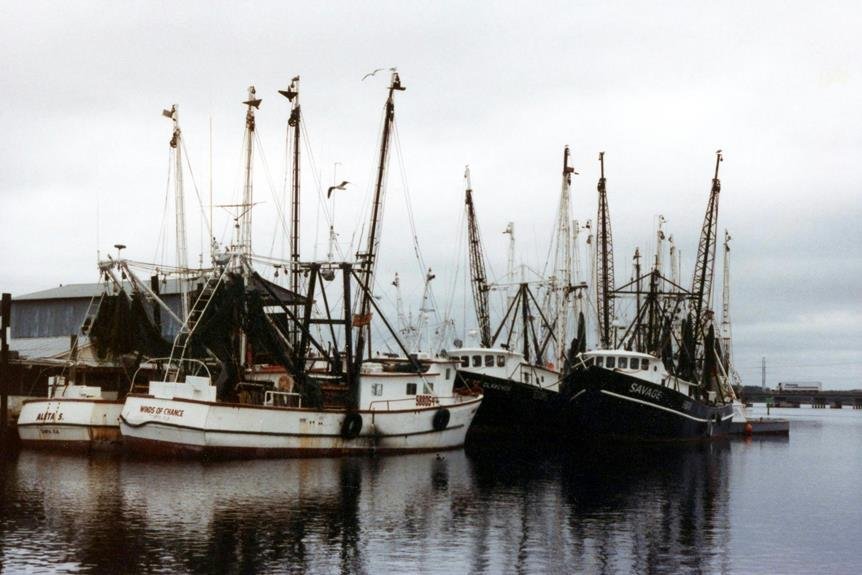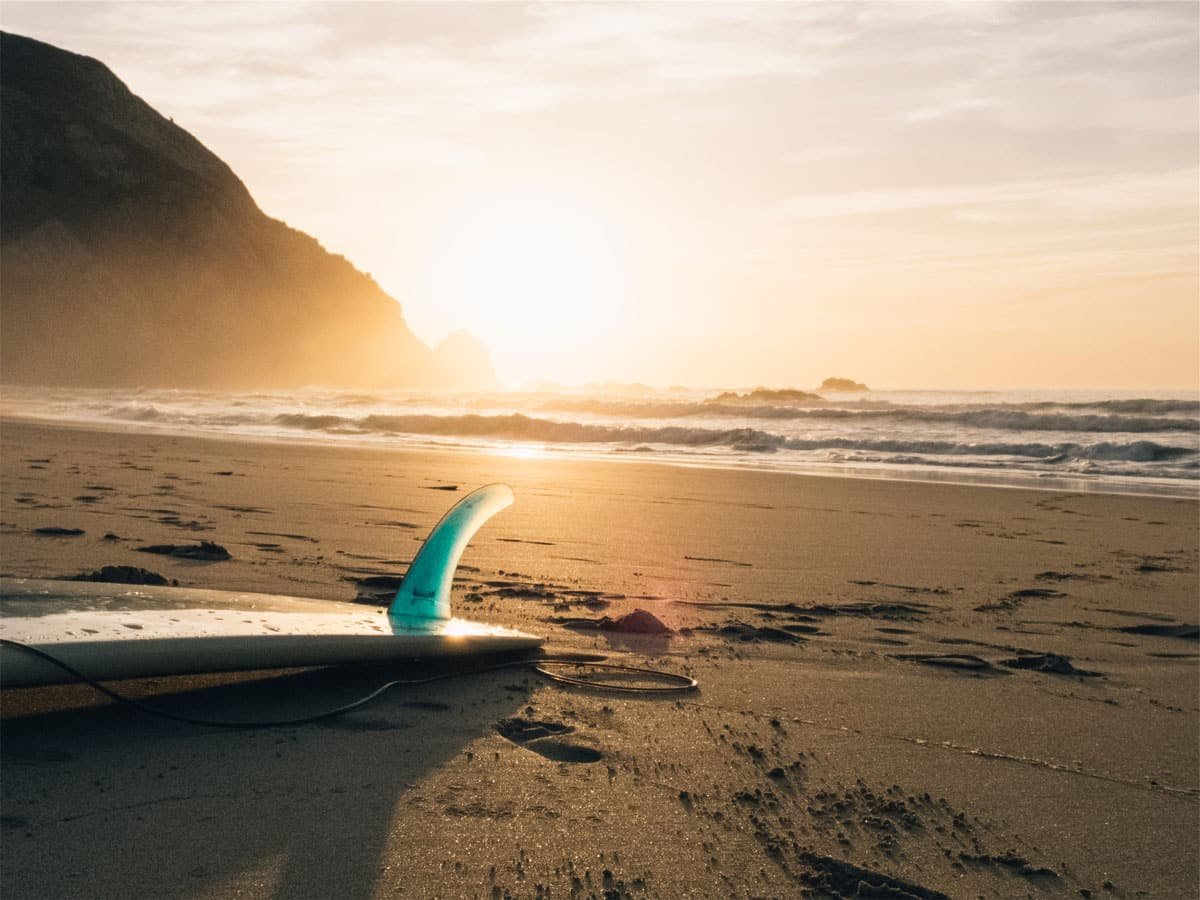Deep sea fishing is a complex and multifaceted sport that requires a deep understanding of ocean ecology, specialized gear, and adaptability to changing environmental conditions. Responsible fishing practices, adherence to regulations, and eco-friendly methods are essential for maintaining marine ecosystems. Anglers must prepare thoroughly, investing in safety protocols, suitable gear, and knowledge of fishing techniques and structures. By combining this expertise with an understanding of fish behavior, habitat, and migratory patterns, anglers can increase their chances of success. As you explore the world of deep sea fishing, uncover the intricacies of this dynamic sport and discover the secrets to landing the catch of a lifetime.
Key Takeaways
- Effective deep sea fishing requires adherence to fishing regulations and adoption of eco-friendly methods to maintain ocean conservation and sustainable fish populations.
- Thorough preparation and safety protocols are crucial to ensure a successful and incident-free expedition, with at least 90% of accidents attributed to inadequate planning.
- Understanding the relationship between ocean currents, sea floors, and fish behavior is essential for successful deep sea fishing, with targeting specific structures and locations increasing the chances of catching a variety of species.
- Adapting to environmental conditions, such as moon phases, water clarity, and ocean temperatures, is essential for effective deep sea fishing strategies that pinpoint target species.
- Combining resources like fishing apps, interactive maps, and local knowledge enables anglers to refine their approaches and increase their chances of landing trophy catches.
Deep Sea Fishing Overview
Deep sea fishing, a thrilling and challenging pursuit, offers anglers an unparalleled adrenaline rush as they confront formidable, hard-fighting species in the open ocean. This exciting activity requires adherence to fishing regulations, which vary by region and species, to promote ocean conservation and sustainable fish populations. Anglers must familiarize themselves with local laws and guidelines to avoid overfishing and protect vulnerable habitats. Responsible fishing practices, such as catch-and-release and minimal bycatch, are essential for maintaining the health of marine ecosystems. By adopting eco-friendly fishing methods and respecting fishing regulations, anglers can contribute to the long-term preservation of our oceans and the species that inhabit them.
Preparation and Safety
At least 90% of deep sea fishing accidents occur due to inadequate preparation, highlighting the critical importance of thorough planning and safety protocols to guarantee a successful and incident-free expedition. Preparation involves acquiring exhaustive Maritime Insurance to mitigate unforeseen risks and financial losses. Additionally, establishing Emergency Protocols for emergency situations, such as vessel disablement or medical emergencies, is essential. A well-maintained vessel, equipped with essential safety gear, including life rafts, flares, and communication devices, is indispensable. Crew members should be trained in emergency response and vessel operation. Moreover, continuous monitoring of weather forecasts and sea conditions is imperative to make certain a safe and successful deep sea fishing trip. Thorough preparation and adherence to safety protocols reduce the risk of accidents substantially, guaranteeing a memorable and enjoyable fishing experience.
Fishing Techniques and Gear
Most deep sea fishing techniques employ a combination of specialized rods, reels, and tackle tailored to the target species and fishing method, with trolling, jigging, and bottom fishing being popular approaches. Rod maintenance is vital to guarantee peak performance, involving regular cleaning, lubrication, and inspection for damage. Line selection is also critical, as it affects the presentation and durability of the tackle. A suitable line should exhibit sufficient strength, abrasion resistance, and minimal stretch. Monofilament or fluorocarbon lines with a minimum of 20-pound test are recommended for deep sea fishing. Proper line selection and rod maintenance can greatly enhance the overall fishing experience, increasing the chances of landing a prized catch.
Deep Sea Fishing Locations
Offshore structures, including rocks, reefs, and wrecks, offer some of the most productive deep sea fishing opportunities, as these areas tend to attract a diverse range of species and provide habitat for fish to congregate and feed. Ocean currents play a vital role in shaping the sea floors, creating unique features that attract fish. These structures can be found in various locations, including:
| Location | Description |
|---|---|
| Continental Shelf | A shallow, gently sloping area of the sea floor |
| Sea Mounts | Underwater volcanoes that rise from the ocean floor |
| Mid-Ocean Ridges | Mountain ranges that run through the center of the ocean |
| Kelp Forests | Dense areas of kelp seaweed that provide habitat for fish |
Understanding the relationship between ocean currents, sea floors, and fish behavior is essential for successful deep sea fishing. By targeting specific structures and locations, anglers can increase their chances of catching a variety of species.
Structures and Habitat
The complex topography of the ocean floor, characterized by diverse structures and habitats, plays a pivotal role in shaping the distribution and behavior of deep-sea fish species. Marine landscapes, including seamounts, canyons, and ridges, create unique ecosystems that support a wide range of marine life. Oceanography studies have revealed that these structures influence ocean currents, nutrient distribution, and sediment transport, which in turn affect the distribution and abundance of deep-sea fish. For example, seamounts can create areas of upwelling, which support productive fisheries. Understanding the relationships between marine landscapes, oceanography, and deep-sea fish habitats is essential for effective conservation and management of these ecosystems. By exploring the complex interactions between these components, we can better appreciate the importance of preserving these unique and threatened ecosystems.
Fishing Strategies and Tips
Effective deep sea fishing strategies involve a thorough understanding of the target species' behavior, habitat, and migratory patterns, as well as the ability to adapt to changing environmental conditions. Adapting to moon phases, for instance, is essential as certain species are more active during specific lunar cycles. Water clarity is also pivotal, as clear waters enable visual feeding, while murky waters necessitate scent-based feeding. Monitoring water temperatures, winds, currents, and seasons allows anglers to pinpoint target species. Understanding ambush points, sheltered areas, and underwater structures is key for successful deep sea fishing. By combining these factors, anglers can develop effective strategies to increase their catch rates.
Understanding Fish Behavior
Fish behavior is closely tied to their habitat and food sources, with species such as tuna and marlin exhibiting complex migratory patterns in response to changes in water temperature and prey distribution. Understanding these patterns is essential for successful deep sea fishing. Fish patterns, such as diel vertical migration, where fish move vertically in the water column in response to light and darkness, can substantially impact fishing success. Ocean ecology plays a pivotal role in shaping fish behavior, with factors like ocean currents, upwellings, and oceanographic features influencing fish distribution and behavior. By recognizing these relationships, anglers can better anticipate and target specific species, increasing their chances of a successful catch.
Fishing Resources and Tools
Anglers seeking to maximize their deep sea fishing success can leverage a range of resources and tools to inform their strategies and techniques. Fishing apps, for instance, provide real-time data on marine conditions, fish behavior, and weather patterns. These apps often feature interactive maps, allowing anglers to identify productive fishing spots and navigate the open ocean. Additionally, marine forecast tools offer critical insights into wind, wave, and current patterns, enabling anglers to plan their trips accordingly. By combining these resources with local knowledge and experience, deep sea fishermen can refine their approaches and increase their chances of landing trophy catches.
Community and Inspiration
Frequently, deep sea fishermen draw inspiration from the collective knowledge and experiences shared within online forums, social media groups, and local fishing clubs, where they can connect with like-minded individuals and stay updated on the latest techniques, gear, and fishing hotspots.
- Fishing legends and angler heroes often share their stories, tips, and experiences, inspiring others to venture into the deep blue sea.
- Online communities provide a platform for anglers to showcase their catch, share fishing trips, and learn from others.
- Local fishing clubs offer a space for anglers to network, participate in tournaments, and attend workshops and seminars.
- Through these communities, anglers can gain valuable insights, stay motivated, and find inspiration to tackle the challenges of deep sea fishing.
Fishing News and Updates
Stay abreast of the latest developments in the world of deep sea fishing by following reputable sources that provide timely updates on fishing regulations, species research, and emerging trends in tackle and techniques. Staying informed is essential in the ever-changing landscape of deep sea fishing. Fishing regulations, for instance, are constantly being revised to safeguard the long-term sustainability of marine ecosystems. Ocean conservation efforts also play a pivotal role in maintaining healthy fish populations and habitats. By staying up-to-date on the latest news and updates, anglers can make informed decisions that benefit both their fishing experiences and the environment. Reputable sources, such as fisheries management organizations and marine conservation groups, provide valuable insights into the world of deep sea fishing.
Angler Academy and Learning
Through a thorough range of interactive modules and educational resources, the Angler Academy provides a structured learning environment where novice and experienced anglers alike can refine their skills and expand their knowledge of deep sea fishing.
The academy offers:
- Fishing Mentorship: Learn from experienced instructors who provide one-on-one guidance and support to help you improve your deep sea fishing skills.
- Online Courses: Take advantage of in-depth online courses covering deep sea fishing techniques, gear, and strategies to enhance your knowledge and confidence.
- Interactive Simulations: Engage in realistic simulations that mimic real-world deep sea fishing scenarios, allowing you to practice and refine your skills in a controlled environment.
- Resource Library: Access a vast library of educational resources, including videos, articles, and tutorials, to stay up-to-date on the latest deep sea fishing techniques and best practices.
Frequently Asked Questions
What Is the Best Time of Day for Deep Sea Fishing?
During peak tide cycles and favorable moon phases, prime fishing times occur when water movement and lunar influences synchronize, increasing the likelihood of predator fish activity, typically during early morning and late afternoon periods.
Can I Catch Fish in Shallow Waters Near the Shore?
"A bird in the hand is worth two in the bush," and in shallow waters, opportunistic fishermen can capitalize on tidal fluctuations and structural anomalies along the shore, where tidal patterns and shore structure converge to create hotspots for catching fish.
How Do I Handle a Large Fish That's Too Heavy to Reel In?
When handling a large fish too heavy to reel in, employ fish-tiring techniques to exhaust the fish, then carefully guide it alongside the boat, taking care to avoid line breaking due to excessive strain or sudden movements.
Are There Any Deep Sea Fishing Apps for Navigation and Tracking?
What role do mobile applications play in enhancing navigation and tracking for anglers? Indeed, various deep sea fishing apps, such as Navionics or Fishidy, integrate Marine Electronics, allowing users to create Fishing Logs, track routes, and access nautical charts for a more precise and informed fishing experience.
What Are the Most Common Deep Sea Fishing Injuries and How to Prevent Them?
In maritime activities, Sea Sickness and Hook Hazards are prevalent injuries. Preventative measures include taking anti-nausea medication, staying hydrated, and wearing protective gear, such as gloves and eyewear, to mitigate Hook Hazards and guarantee a safe fishing experience.
Conclusion
In summary, deep sea fishing is a complex, multifaceted pursuit that demands meticulous preparation, specialized techniques, and a nuanced understanding of marine ecosystems. Like a masterful composer, the successful deep sea angler orchestrates a harmonious blend of gear, strategy, and environmental awareness to land the coveted catch. As the ocean's secrets continue to unfold, the allure of the deep beckons, challenging anglers to refine their craft and push the boundaries of this enthralling sport.









